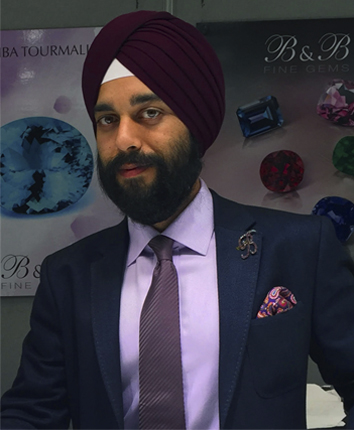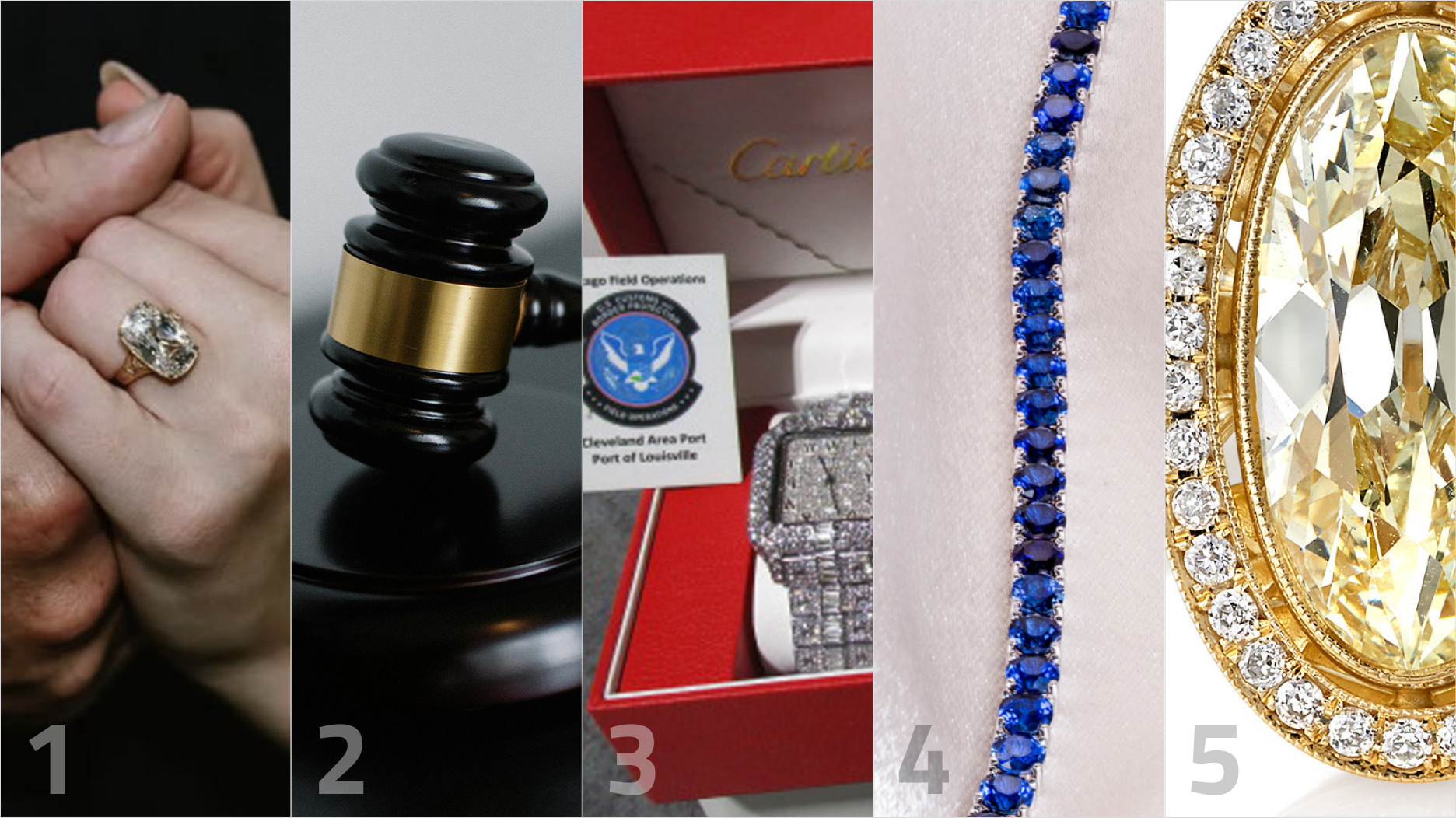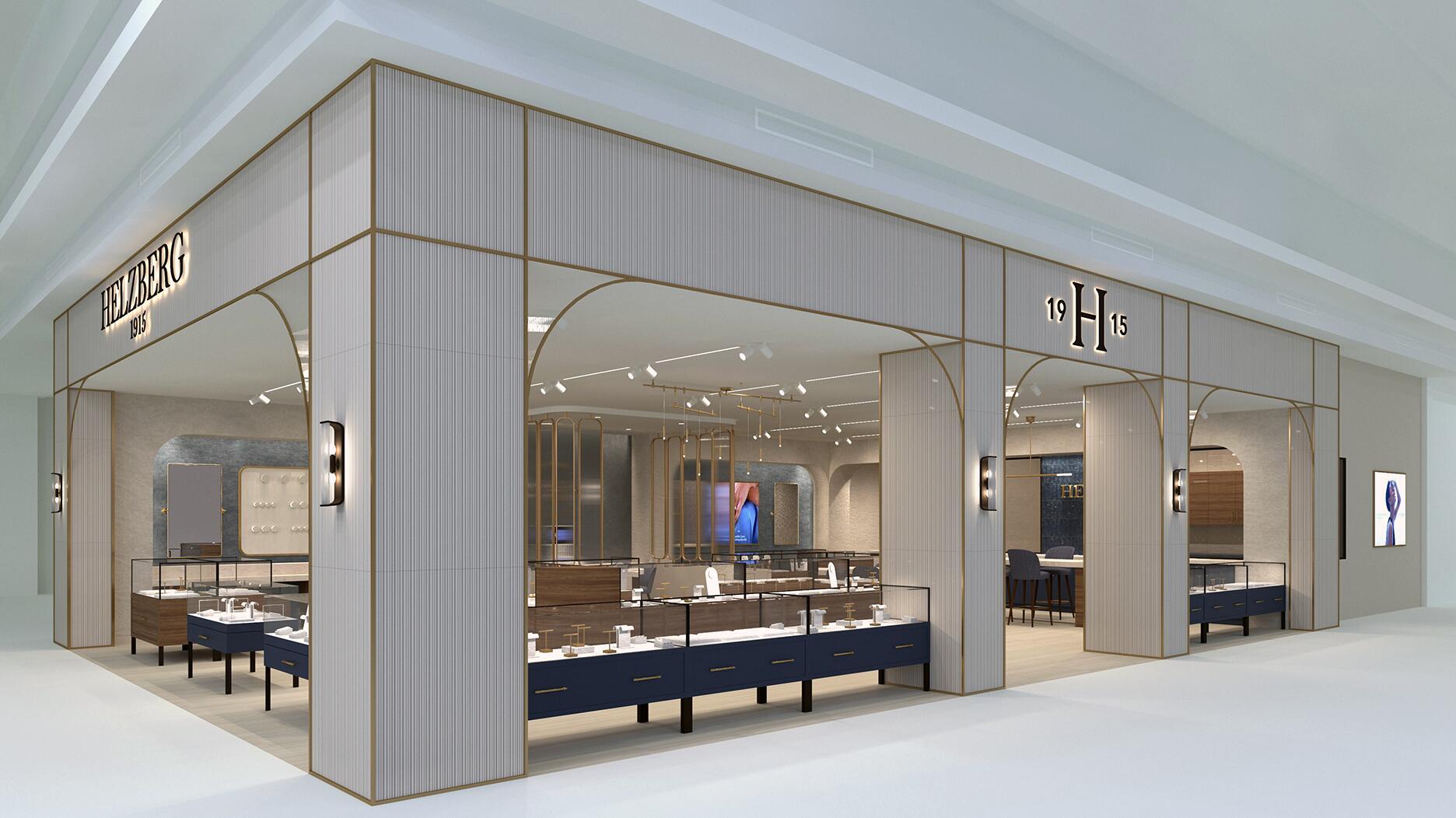Executive Chairman Richard Baker will take over the role as rumors swirl that a bankruptcy filing is imminent for the troubled retailer.
The Next Generation: David Bindra of B & B Fine Gems
One of the leading figures of his generation in the gemstone sector, Bindra shares his thoughts on where the industry is headed.

In his family business, B & B Fine Gems, David Bindra represents the second generation. In the gemstone industry at large, he represents one of the most exciting and influential young voices.
Bindra’s father immigrated to the United States from India and without any family connection or background in the gemstone trade, began selling stones like Swiss blue topaz, amethyst and citrine door to door--“pretty much anything that was below $2 or $3 a carat,” Bindra explained--sourced from a friend in Jaipur.
As Bindra’s father began building more relationships, both in India and the United States, he started to travel to mining sites overseas.
“That’s when our business began to change,” Bindra explained. “We focused on the whole gamut of fine color and stated sourcing correctly from places like Sri Lanka and Africa.”
Bindra’s father and mother ran the business on their own until Bindra, who is 33, joined the company 10 years ago. His sister Sabrina, 27, joined about four years ago. 
“We focus on fine cuts and fine color saturation of all different types of colored stones. Our strength is in every aspect of the market but specifically in fine quality, so we deal with everything from rare, esoteric, exotic collection stones to bread-and-butter materials for manufacturers of fine jewelry. Most of our business is done with people who are manufacturing fine jewelry or individuals who are retailing the jewelry themselves.”
The next generation has infused the business with a modern vitality. Bindra has a drool-worthy Instagram account that captures his contemporaries’ idea of luxury that’s cool rather than stuffy--matching exquisite gemstones to sneakers of the same color.
Bindra and his sister have been heavily involved in the jewelry community in Los Angeles, where they are based, as well.
David is currently the president of the Los Angeles chapter of the GIA Alumni Association, and has been for the past three years. He’s also on the board of directors for the Jewelers Vigilance Committee; his sister is a former co-president of WJA Los Angeles.
As part of a new series highlighting the next generation of prominent voices in the jewelry industry, I picked Bindra’s brain on why he joined the family business, where he feels the industry is headed and how he’s helping to shape it.
“I always grew up with an extreme passion and love for colored gemstones and for jewelry in general. I grew up going to Tucson my whole life. Tucson has been like my Disneyland. I grew up around rocks and minerals and crystals. I had a very romantic connection to it, but I didn’t care so much for the business side of it. I didn’t understand it nor did I appreciate it.
I was en route to practice international law but my heart wasn’t really in it. I was studying for the LSATs. I took one trip with my father overseas to shadow him and clear my mind. When I saw the inner workings of the business, how this is such a community-based ecosystem and how the relationships and the trust really influence your position in this industry, I was fascinated. I really wanted to have more knowledge and understanding of it. So I started to explore the idea of joining the business and eventually went to GIA. When I got my graduate gemologist degree, that’s when my passion was really ignited.”
On Shaping the Jewelry and Gemstone Community
“A lot of my sister’s and my involvement comes from a desire to give back, which is something instilled in us not only from our parents but other mentors we’ve had in the industry. We’re trying to give back to an industry that’s given us an art and craft that we’re passionate about. We’re also trying to cultivate and develop the next generation of our industry.
There’s a generational gap that exists in our business. In order to sustain an ecosystem that will be present in the next 20 to 30 years, we need to work hard on developing the next generation of gem dealers, manufacturers, couture designers, diamaintaires and all of the above. To do so it’s important to have a cohesive community effort. That’s a big reason why both of us are very involved in not only promoting the community aspect of this business but also uplifting and empowering young individuals to be in positions of power and to be in positions of influence so we have a say as to how this whole business will be molded. In 20 to 30 years it’s our industry to sort of take, to manage and shape, and hopefully grow and watch it blossom into something really beautiful.”
What His Generation Brings to the Table
“There’s something to be said for being part of the technological age. We’re extremely tech savvy and we’re early adopters of technology, whether it’s using social media platforms like Instagram or even digitizing parts of the business, like communications through platforms such as WhatsApp and WeChat. I think our generation stands at a huge advantage for using this tech on a day-to-day basis, and then in finding ways to implement it, capitalize on it and apply it to our business. We’re faster. We communicate faster, we move faster, and it puts us at a huge advantage and creates a greater ease of transactional activity because of that exposure that we have.
We can, in a much more effective way, become tastemakers, or have a pulse on who tastemakers are in our industry, and kind of navigate and have a feel for market trends, consumption, certain items to bring to the market. Tech is the crucial principle of the advantage we have in that.”
On What’s Exciting Him About Gemstones
“I think what’s exciting me the most is the diaspora of really interesting couture designs that are out there. Obviously, that leads to a more interesting product flow for us when we do sell items into the marketplace but it’s also fulfilling because we’re seeing a very high level of creativity in the use of colored gemstones. For me that’s exciting because it allows us to be more creative in how we source and how we manufacture items for the market, and it forces us to think outside the box and to do things that we normally wouldn’t have done decades ago in this business.”
On Challenges
“I think a challenge for the entire jewelry business is there’s a huge disconnect between the perceived value of jewelry and millennials. Many of them don’t hold that inherent perceived value for tangible assets like fine jewelry or a fine timepiece. A lot of people talk about millennials buying into experiences rather than products. That’s a challenge but also an opportunity because I feel that we can utilize this palette that millennials have and create a more unique product base for them, a more unique shopping experience. I think that’s something you’ll see in the next five to 10 years. Companies that can adapt and create an aesthetic that caters to our generation will prosper, and people who aren’t able to will find themselves in the difficult spot of selling to the next generation.”
On Loving His Job
“It just doesn’t feel like work. I go to work and I play every day. It’s my life’s passion. Whether it’s the people who I’m dealing with, who are like family, or the material I’m dealing with, which is literally treasure from Mother Nature, it’s a blessing to be in this business.”
His Advice for Gem Sourcing
“This business, especially the colored gemstone business, is one based on trust. The most important thing is to develop a trusting relationship with your vendors, being able to rely upon the knowledge and expertise of individuals who are in the marketplace on a regular basis. And keep a very keen eye on what’s happening in the marketplace yourself.”
On His Next Step
“Within our company we’re really just working on growing our sphere of influence within our industry and helping our clientele educate their consumers about fine colored gemstones. Something I’m specifically focused on is helping our clients create collectors of fine and exotic colored gemstones. Much of that has to do with educating them and creating the value for these items. Many times, because of the lack of marketing that is dedicated to the world of colored gemstones, there are many individuals who don’t know the wonderful romantic stories that exist behind the world of color.
So our job is to translate that. We’re sort of the raconteurs of the colored gem world and we need to be in order to create that value.”
The Latest

Mohr had just retired in June after more than two decades as Couture’s retailer liaison.

Shekhar Shah of Real Gems Inc. will serve as president of the Indian Diamond & Colorstone Association in 2026.

How Jewelers of America’s 20 Under 40 are leading to ensure a brighter future for the jewelry industry.

This year’s good luck charm features the mythical horse Pegasus, and is our first Piece of the Week of the new year.


As part of the leadership transition, Sherry Smith will take on the role of vice president of coaching strategy and development.

It marks the third time the country has headed the Kimberley Process. Ghana will serve as vice chair.

Roseco’s 704-page catalog showcases new lab-grown diamonds, findings, tools & more—available in print or interactive digital editions.

The new Bulova x Stetson designs highlight two animals often associated with the American West—the bison and the Texas Longhorn.

Its residency at Yamron Jewelers will run through May 2026.

From influential executives to innovative designers, we pay tribute to the people we said goodbye to this year.

The retailer is expanding into areas with large Indian and South Asian populations.

The Italian brand has opened its first flagship amid the peaks of the Dolomites in Madonna di Campiglio, Italy.

The new curation at the Natural History Museum of Los Angeles County showcases rare gem and mineral specimens in their uncut, natural state.

The couple pleaded guilty to concealing at least $127 million in cash transactions at its precious metals businesses.

Consumers shared concerns about prices, inflation, tariffs, trade, and politics in the survey’s write-in response section.

In February 2026, the auction house will move its headquarters to the former Steinway Hall, a neoclassical landmark on Billionaires’ Row.

The new show will take place Jan. 23-25, 2026.

The former BHP Billiton leader and Gemfields chairman is remembered for his influential leadership throughout his 50-year mining career.

The LVMH-owned brand has partnered with the costume design union to revamp its award for 2026.

The luxury titan inked a deal to acquire an initial minority stake in the jewelry manufacturer with a pathway to full ownership by 2032.

The company’s curation of unsigned vintage and estate jewelry debuted at the Bloomingdale’s in Costa Mesa, California.

In the recent multi-shipment seizure, CBP also found counterfeit Audemars Piguet, Moncler, and Chrome Hearts items.

Jewelers of America execs and National Jeweler editors discuss tariffs, the sky-high gold price, and the engagement that broke the internet.

The luxury goods company said founder Ippolita Rostagno will remain at the brand’s helm.

Laura Burdese, who joined the Italian luxury brand in 2022, will take on the role in July.

The National Jeweler editors revisit the most noteworthy industry happenings and design trends from 2025.


























